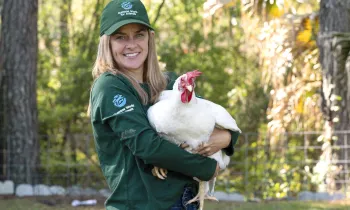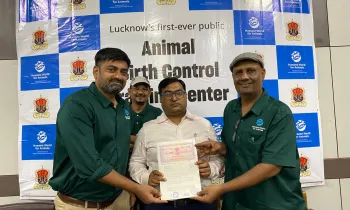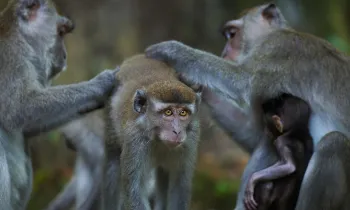Search
Found 2938 results
Animal charity Humane Society International Latin America to become "Humane World for Animals” to better encompass mission
SAN JOSÉ (14 Feb. 2025) ― Animal charity Humane Society International Latin America today announced its rebrand to Humane World for Animals to establish clarity in its mission to create lasting change for animals in Costa Rica and around the world. The change takes effect today and underscores the
Humane Society International supports Guatemalan authorities with training for their fight against wildlife trafficking
PETEN, Guatemala—Responsive to the threat that illegal trafficking poses to wildlife in Guatemala, Humane Society International and its local partner Asociacion Rescate y Conservacion de Vida Silvestre recently provided training on proper handling of confiscated animals to wildlife technicians from
Animal charity Humane Society International Brazil to become "Humane World for Animals” to better encompass mission
BRASILIA (14 Feb. 2025)―Animal charity Humane Society International Brazil today announced its rebrand to Humane World for Animals to establish clarity in its mission to create lasting change for animals in Brazil and around the world. The change takes effect today and underscores the organization's
Nearly 100 pets receive free veterinary care in Tortuguero, Costa Rica
TORTUGUERO—Despite being diagnosed with heartworm disease, a cheerful dog named Pulgosin is showing steady improvement thanks to the treatment he received during free animal clinics organized in the Limón Province by Humane World for Animals Costa Rica, formerly called Humane Society International
Chiapas classifies animal cruelty as a crime: A historic step for animal protection in Mexico
CHIAPAS, Mexico—Chiapas is no longer the only state in the country without criminal penalties for animal cruelty. With the recent reform of its Penal Code, the State Congress of Chiapas approved the incorporation of a new section that criminalizes acts of cruelty against companion animals. This
Brazil votes to ban cosmetic animal testing after more than a decade of advocacy by Humane World for Animals and allies
Brasília – Today Brazil’s Chamber of Deputies voted to outlaw the sales of cosmetics that have been tested on animals after the approved ban comes into effect. This measure closes loopholes that have long existed within the country’s legal framework for cosmetics, which includes a few state-level
Lucknow to get India’s first-ever public, comprehensive training center for Animal Birth Control
LUCKNOW, Uttar Pradesh—In a major step toward humane and effective street dog population management, the Lucknow Municipal Corporation and Humane World for Animals India (formerly called Humane Society International India) have signed a Memorandum of Understanding to run a dedicated training center
Jane Goodall ricordata come paladina degli animali
WASHINGTON, D.C., Stati Uniti―Humane World for Animals, precedentemente nota come Humane Society International e Humane Society of the United States, piange la scomparsa di Jane Goodall, fondatrice dell’Istituto Jane Goodall e Messaggera di Pace delle Nazioni Unite. Il nome della celebre primatologa
Jane Goodall remembered as a hero for animals
WASHINGTON, D.C.―Humane World for Animals, formally known as the Humane Society of the United States and Humane Society International, mourn the loss of Jane Goodall DBE, founder of the Jane Goodall Institute and U.N. Messenger of Peace. The primatologist’s name became synonymous with conservation
Humane World for Animals Canada exige l'interdiction immédiate des importations de singes sauvages menacés d'extinction
OTTAWA, Ontario— Humane World for Animals Canada, anciennement appelée Humane Society International, exhorte le gouvernement fédéral à mettre fin immédiatement à l’importation inhumaine de macaques capturés dans la nature. Plus tôt cette année, des spéculations et une vive indignation ont éclaté à l
Humane World for Animals Canada demands immediate ban on endangered wild monkey imports
OTTAWA, Ontario—Humane World for Animals Canada, formerly called Humane Society International, is calling on the federal government to immediately end the inhumane importation of wild-caught macaques. Earlier this year, there was speculation and outrage that macaques imported from Cambodia and








